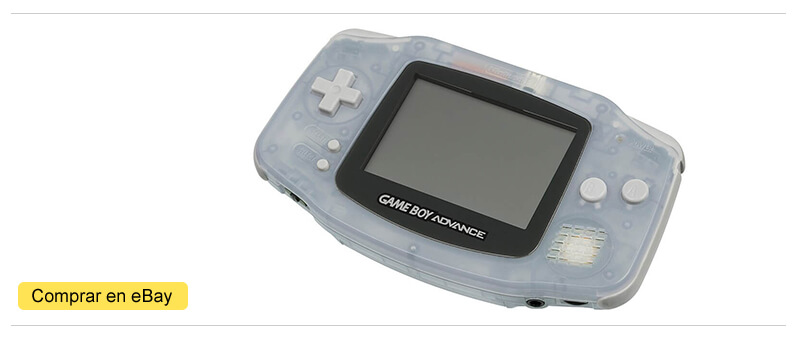Nintendo’s Game Boy Advance was the successor to the well-known Game Boy, the portable console with which Nintendo finally took the plunge and ventured with a new 32-bit system much more powerful than the previous one, but without losing the “Game Boy” brand. Boy” nor backwards compatibility.
Leaving aside the 3D fashions and polygonal graphics of those years, Nintendo opted for a balanced console that was very powerful in 2D and capable of far surpassing the Super Nintendo games. The Game Boy Advance was a resounding sales success, currently being one of the best valued consoles by retro collectors.
| COMPANY: | Nintendo |
| CONSOLE GENERATION: | 6TH GENERATION OF CONSOLES |
| RELEASE DATE: | March 21, 2001 in Japan June 11, 2001 in North America June 22, 2001 in Europe |
| GAMES CATALOG: | 1,538 GBA video games (including budget and classic versions) 1046 original Game Boy (compatible) 915 Game Boy Color games (supported) |
| SOLD UNITS: | 81.5 million units worldwide (all versions) |
| LAUNCH PRICE: | 9,800 yen |
| PROCESSOR: | 32-bit CPU (ARM7TDMI 16.78 MHz) for GBA 8-bit CPU (Z80 custom 4.2/8.4 MHz) for GB and GBC |
| FORMAT: | Cartridge |
| BUY IT ON EBAY: | https://ebay.us/K2FYMR |
- History of the Game Boy Advance
- Game Boy Advance models
- Modding and resurrection of the Game Boy Advance, the second life of the GBA
- Price of a Game Boy Advance console, how much did it cost?
- Collecting the Game Boy Advance
- Buy a second-hand Game Boy Advance
- TOP Retro: Best Game Boy Advance Games
- FAQ Game Boy Advance
- Technical characteristics of the Game Boy Advance
Game Boy Advance
Nintendo’s Game Boy Advance was the last Nintendo console to make use of the “Game Boy” brand and concept (2022), a standard within the industry and history of video games and without a doubt a great responsibility on the shoulders. of the development team, Game Boy had reigned for more than 10 years in the portable landscape and the GBA was the successor of such a tremendous feat.
Fortunately for Nintendo and us (users), the Game Boy Advance fulfilled its objectives in an outstanding way: Launched on March 21, 2001 in Japan, and later worldwide, it sold a whopping 81.5 million consoles between its different models. , remaining very close to the 87 million sold of the original Game Boy (over a longer period of time).
From the point of view of collectors and lovers of retro video games, the Game Boy Advance is much more than the successor to the first Nintendo handheld, the Game Boy Advance is the last console of the 2D Era, of the original pixelated graphics and platform games, the end of a glorious era that we remember with nostalgia, the summum of everything learned in the 90's, concentrated in a machine that fits in the palm of our hand. All of this is the Game Boy Advance.
Despite having eliminated the competition of its time, its incredible sales and its immense catalog of video games, the GBA is a console that has remained in the collective imagination of gamers, as a secondary console or one of little importance in the game. context of video game history. The fact of placing its existence between two giants like the pioneer (the original GameBoy) and the Nintendo DS (154 million units sold), has meant that Nintendo’s 32-bit portable has been unfairly forgotten for many years… until his glorious resurrection.
And once presented, let’s thoroughly know and remember the 32-bit Nintendo portable!
Hey! Before continuing, we strongly recommend that you read the dedicated (and well thought out) article on Nintendo's first portable console: The original Game Boy.
GameBoy Advance Handheld Background
There is no doubt that few consoles have had such a great responsibility on their shoulders as the GBA, being the successor to the console that expanded the video game market to our palms, pockets, breaks and eternal lunches or dinners in restaurants. It is a burden that few could bear.
The history of the GBA is clear and known to all, years after the Game & Watch of a lifetime, Nintendo took a giant step in 1989 by “encapsulating” its well-known Famicom (NES) in a small cartridge device with a pixelated screen , 4 shades of green and a very long battery life (4 AA batteries), the Game Boy.
The Game Boy was the console that fit in our pockets, the most balanced console in relation to price/performance and the portable console that, without knowing it in those years of recreation and bollicaos, was going to accompany some of us to university and beyond. . The success was such that Nintendo kept its system for more than a decade, launching the last official cartridge of the original Game Boy in 2002 and the Game Boy Color in 2003.
As usual, given such a long life, Nintendo had the opportunity to launch different Game Boy models:
- Game Boy Pocket: Launched in 1996, this revision of its quintessential portable console maintained the same features with a renewed lighter and smaller design. An extra life for your original system that included the great bonus of improving battery consumption.
- Game Boy Light: The most wanted, the definitive Game Boy. In 1998, months before the GBC, Nintendo exclusively launched its Game Boy Pocket with a backlit screen in the Japanese market, thus solving the biggest lack of Nintendo’s retro handheld, its screen. Japanese children finally said goodbye to flashlights under the duvet.
- Game Boy Color: In 1998 Nintendo launched the most powerful revision of its portable console, the GBC greatly improved performance, having exclusive games to take advantage of its hardware and now it was in full color. Fully compatible, it was the perfect console to enter the world of portable or update our old “brick”.
Although the Game Boy Color could be considered a Game Boy 2, Nintendo preferred to grant that honor to a superior machine such as the GBA. We must take into consideration this family of portable consoles, to understand Nintendo’s philosophy and concept regarding its 32-bit portable, the future of its desktop consoles:
- Super Nintendo: Tremendous success of the 16-bit console, with its pixelated 2D graphics, they came to dominate the market and extend its useful life for many years thanks to the improvement chips inserted in the cartridges, facing 32-bit consoles.
- Virtual Boy: Resounding failure of a toy converted into a 32-bit portable video game console. 3D and virtual reality weren’t ready in 1995.
- Nintendo 64: The most powerful machine of its time with 64-bit power and advanced 3D graphics, it could do nothing when it reached a market already dominated by the PSX, a cheaper console that enjoyed the benefits of the CD as a format.
Based on this experience, we can understand the mistakes that Nintendo wanted to avoid with its new console. The correct balance between features/price/launch was vital, the almighty Nintendo had succumbed in those years in the desktop market to the almighty SONY Playstation, a console not as powerful as the N64 but cheaper and launched years before the 64-bit from Nintendo. The Kyoto company could not fail in the field of laptops, its last feud.
Development of the Nintendo GBA
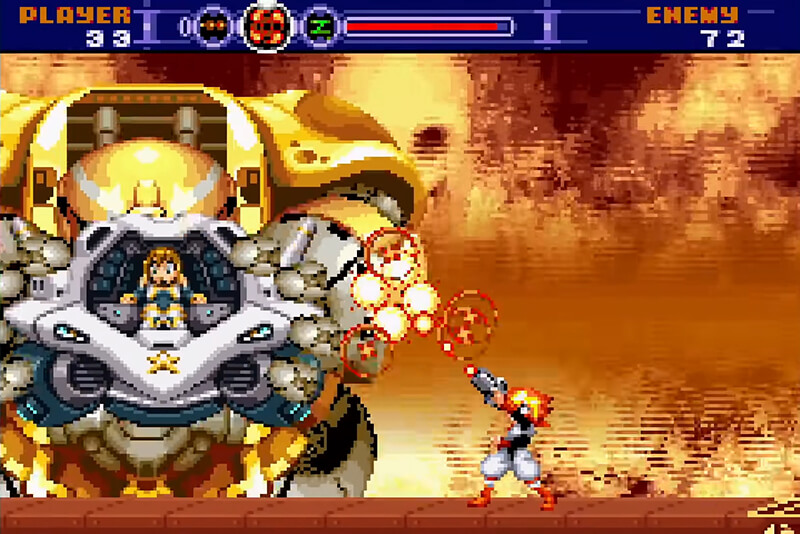
Fortunately, Nintendo itself conducted an interview with the Engineering Department responsible for the development of the Game Boy Advance for its Japanese website shortly before its launch. Thanks to this, we can learn from the hand of the engineers, designers and programmers Masahiko Oota, Kenichi Sugino, Ryuji Umeji, Shuichi Tsugawa and Takanobu Nakajima, how was the journey of the creation of the Nintendo handheld console:
The development time of the Nintendo handheld console was approximately 2 years. First of all, they had to decide which CPU to use, for which it was essential to know the size and definition of the screen. The first GB had a definition of 160×144, for the Advance a definition of 240×160 pixels was chosen, following the horizontal game pattern designed for video games. Obviously, the size of the LCD screen was conditioned by the definition.
From there, the workboard (a motherboard with the various components including the CPU) was developed, through which the development team began to work together with the software developers to define the necessary components and functions, being a long process of more than 1 year just to conclude the technical specifications of the CPU, as well as the functions that the machine should incorporate.
This is one of the longest processes since, once the engineering team shares a CPU with the developers, they work with it and request various changes and functions from the engineers themselves, later requesting the modifications from the CPU manufacturer. necessary from the developers… And start again. This process is carried out as many times as necessary at the request of the client (Nintendo in this case), which is the reason why normally all consoles have customized chips (variants).
Let’s see an example of the above with the popular Motorola 68000, in which each system mounts a version adapted to its needs:
- Megadrive: Motorola 68000 CPU at 7.61MHz.
- NeoGeo: Motorola 68000 CPU at 12MHz.
- CD-i: Motorola 68000 CPU at 15.5 MHz.
- SEGA System 16: Motorola 68000 CPU at 10 MHz.
eye! It is interesting at this point to highlight the close collaboration between hardware engineers and video game developers, adapting the technical specifications of the console to the demands and requests of the programmers. A great way to ensure a console to the taste of the developers and a whole sample of experience on the part of Nintendo, since there are many consoles that have failed throughout history due to their difficulty in programming for them (Atari Jaguar, Sega Saturn...).
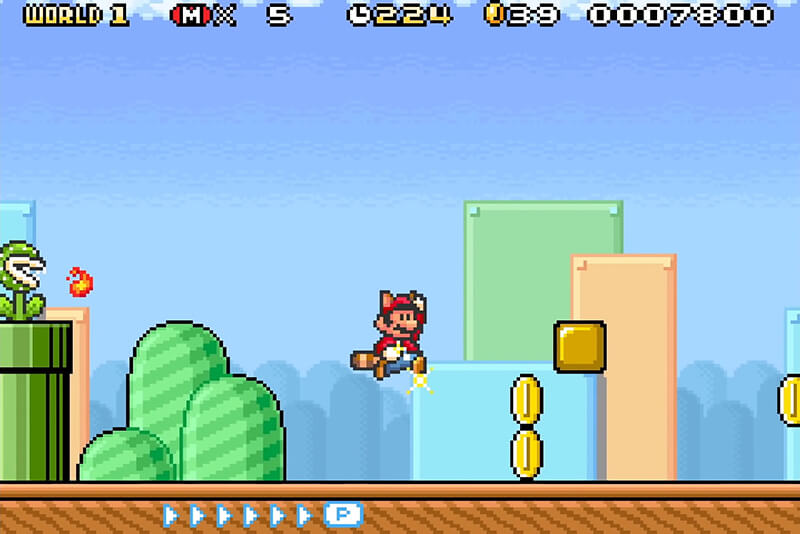
In parallel to the design of the CPU and other pieces of hardware, a fundamental aspect was the exterior of the console. The original Game Boy had enjoyed great success in a vertical format, unlike its competitors the Atari Lynx and Game Gear, but for the GBA a horizontal format was chosen for 2 reasons:
- The screen conditioned everything: size, proportions and shape. If a Game Boy Advance had been made in vertical format with the chosen screen, it would not have fit in any pocket and Nintendo knew perfectly well that this was a key aspect.
- As the developers, based on their experience, began to improve the performance of the console, the idea was to port games from home systems, so a horizontal format was closer to the televisions of the time.
In this way, we see how the size of the screen even conditions the size of the buttons or the crosshead, in addition to the size and format of the console itself. Regarding the buttons, for years the developers had to manage with only the 2 buttons of the original Game Boy (A and B), so adding new buttons was a general demand, being in this case the L and R buttons. that best suited the new console.
One of the big problems they had when designing the compact console was the batteries. In a portable console, 1mm or 2mm extra thickness is a world, so a large number of prototypes had to be made to find the ideal location. When it comes to designing a compact portable console, batteries have the added difficulty of not being able to cut off or hinder the circuitry. During this period, the possibility was considered that the space for the batteries (batteries) could also be used for rechargeable liquid batteries.
An extremely interesting point is the choice of hardware parts in relation to the size of the portable console. The approach of Nintendo’s engineers was totally successful, choosing standard components of the time instead of high technology: In 2000 the technology was already available to create a portable console with the same features but more compact and smaller, integrating pieces of smaller, more complex and more expensive (as in mobile telephony). This last option may seem at first the most logical to launch a new portable console, but it had 2 big problems.
- The increase in the price of the product, in a console mainly designed for children and adolescents.
- The most important, using state-of-the-art components posed a serious supply risk.
The Game Boy Advance was intended to be a mass-produced product (and it was), with a demand for units of over 2 million per month, so it was useless to use highly advanced technological components whose manufacture was limited to 100,000 chips per month, for example . Consequently, the development of the GBA was premised on using parts that could be mass-produced anywhere (not in a single Taiwanese factory). All a success.
This overwhelming logic has been ignored or forgotten many years later, such as in the PS5 and Xbox Series X consoles, consoles whose assembly lines have been paralyzed on multiple occasions due to their dependence on state-of-the-art components, normally limited to very specific and exclusive manufacturing centers.
Despite having asked the North American design team for their opinion, as they were aware that their product would be released worldwide, the development team understood that much of the success of the Game Boy Advance is that it is a genuine Japanese product, so they did not implement any significant aspect raised by their North American colleagues (they would surely ask for a console with larger dimensions for their hands). It may seem like a trivial matter, but take a controller from the first American Xbox and compare it with the PS2 Dualshock, the difference in size is abysmal, but the Japanese are like that… And they’re doing well.
Regarding the graphics, from the first moment they focused on the console as a 2D machine, ignoring the polygons due to the high energy consumption and higher costs when developing a video game. The portable concept of the Advance would be closer to the Super Nintendo than to the Nintendo 64, quite a gamble in a few years when we were at the height of the millions of polygons on our home consoles.
GBA, the 32-bit laptop with 16-bit essence
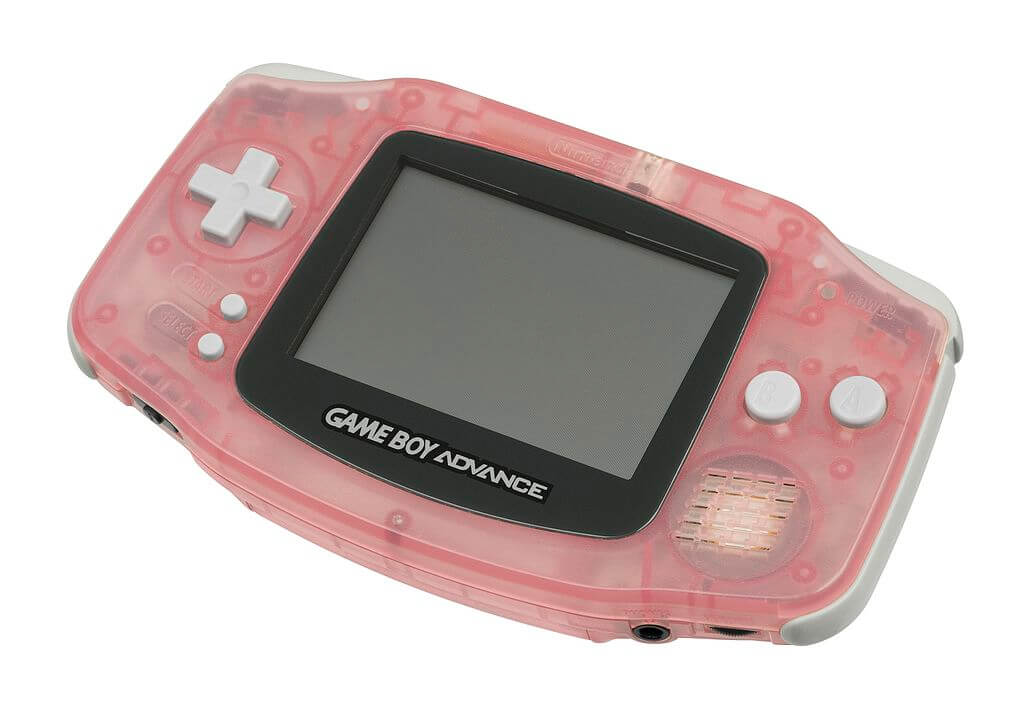
On March 21, 2001, Nintendo offered the world its newest creation, its new 32-bit full-color landscape 32-bit portable, all for 9,800 yen. The new Game Boy was finally a reality and, just in case, it was also compatible with the entire catalog of previous Game Boy models. The world welcomed it with open arms and in the first week alone it is estimated that more than 600,000 units were sold in Japan… Crazy.
Nintendo's Game Boy Advance was the finishing touch to the 2D Era and its pixelated sprites, an ode to the 90's and especially to the SNES in our palm, an evolution that from our perspective may seem strange (it was the time of PS2 and Game Cube), but in those years it made all the sense in the world: If the Game Boy had been the equivalent of the portable NES, now it was the turn of the Super Nintendo...
And what a success! Nintendo juggled again, took out its development scale and created one of the most balanced consoles in the entire history of video games in terms of quality/price. Nintendo had done it again, an affordable console with a perfect size and enough power to take us to fantastic unknown worlds… Or perhaps not so unknown, dozens of 16-bit Nintendo characters once again paraded through the screen of the GBA and us, delighted.
But the Game Boy Advance was much more than just a Super Nintendo, it was the SNES 2.0, a super ultra vitamin that could handle anything thrown at it, as long as it was in the field of 2D. The 32 bits of “power” (it was our perception) suited our portable Snes wonderfully, causing that in addition to the innumerable conversions, sequels were seen that greatly improved their desktop predecessors, so the comparisons were won of street the portable console.
Little by little the Advance distanced itself from the SNES and forged its own catalog, an immeasurable catalog full of great games with a 16-bit essence but increasingly closer to the 32-bit it contained inside, revealing its technical potential. . The GBA’s catalog is huge and full of old friends, as well as full backwards compatibility with classic Game Boy and Game Boy Color games, few systems can offer us so many games.
As a portable console, we are facing a practically perfect system, due to the catalog of games, ergonomics, weight, battery life, multiplayer possibilities, quality of materials… The Nintendo portable is perfect, except for one aspect, its screen is NOT backlit. Look at the following image:

It is true that in those years we did not have the current level of demand, but the screen really ruined what could have been a perfect gaming experience. As it was not backlit, the colors looked dull, the contrast was minimal (perspective 2022), the reflections were constant and in short, you could not play without a nearby point of light. Year 2001 and we were still with flashlights under our duvets.
This was the great “but” of the Nintendo console, an aspect that, despite the fact that we overlooked it in those years, greatly influenced the gaming experience, being decisive today: It will be difficult for you to enjoy a I play with the original console if it is not in optimal conditions. It may seem too pessimistic, but our mobile phones have been accustoming us to well-lit screens in the palm of our hands for decades, the comparison is inevitable and the disappointment, too.
The all-important balance of Game Boy systems had been brought back to the forefront again. A real problem today, but a lesser evil in the years of the GBA.
And the GBA multiplayer?
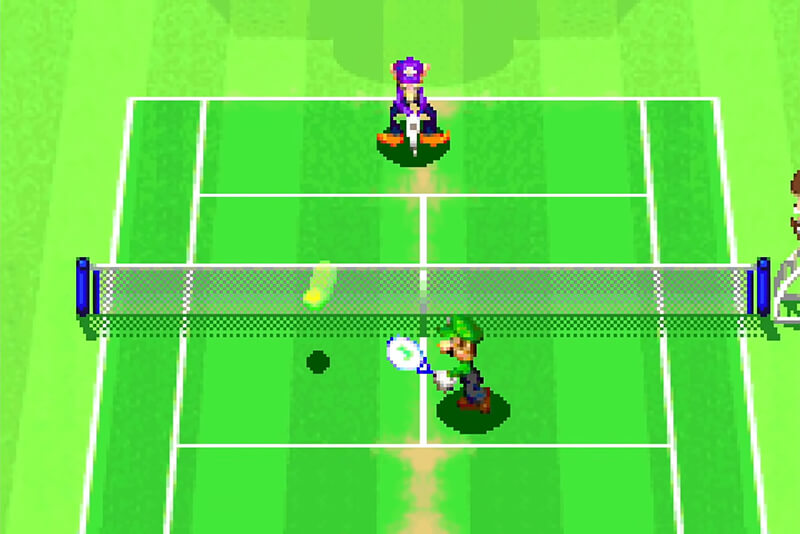
Do you have more than one friend to meet up with? You are in luck! The Game Boy Advance comes ready to connect up to 4 offline consoles with its link cable, so games can be epic. In addition, there are two multiplayer modes, with only 1 cartridge or multi-cartridge (each console with the game), thus solving the typical problem that we had with the multiplayer of the previous generation of portable consoles.
Regarding online multiplayer, in Japan for a few years there was the possibility of using a mobile phone adapter to connect our Game Boy Color or Game Boy Advance, being mainly a data exchange system of the type of records and characters for certain games. The games that most exploited online by call were Pokemon Crystal Version and Zero Tours.
Any more fricada…? Of course! Our Game Boy Advance can be connected with the appropriate cable to the Nintendo Game Cube and act as a control with a screen, thus offering endless possibilities in the playable, a small preview of what years later the Wii would end up developing. U (at the conceptual level).
Far from being limited to acting as a mere menu, there are many functions that were explored in this way: Minimaps, demos, minigames, pet care, data and character transfer, unlocking new content, asymmetric multiplayer (Pac Man vs.) and cooperative multiplayer…
Cooperative multiplayer on the Game Cube with our Game Boy Advances, isn't that wonderful? Nintendo merged its desktop and portable consoles together with the SNES aesthetic Zelda universe, creating one of the best offline multiplayer experiences in the entire history of video games, attentive requirements:
- You must have 3 friends willing to come to your house.
- Your 3 friends must have the Game Boy Advance with its Link cable to the Game Cube.
- For your part, you have to have a Game Cube, a TV and a big sofa.
- You must have the Legend of Zelda: Four Swords game from the Game Cube.
- Beer and chips for everyone (optional).
Here is the result, you can press play to activate a YouTube video in which you will see 4 kids enjoying it, which is good:
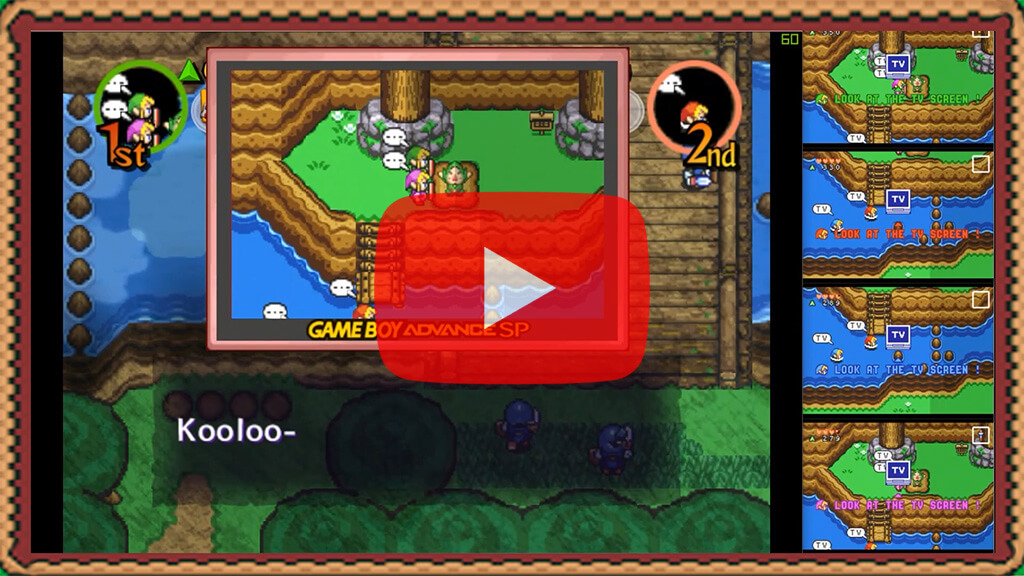
Four players playing Legend of Zelda: Four Swords offline simultaneously, just like in the old days. Four people enjoying a single game, each one on their console screen with warnings when they should pay attention to the TV. Four happy friends who will live an adventure and game experience that very few players have been lucky enough to experience (although as you can see, it can already be emulated).
That is where the magic of Nintendo lies, that Nintendo that we like so much when it dares with innovative ideas, the germ of the Wii U, a product for a very minority audience (owners of Game Cube + GBA + cable + game), but not prevented its launch… An experience that we should all be able to enjoy one day. And now, excuse me if I got melancholy, but it is these game experiences that really impact our retinas and make the video game industry evolve… Although in the end they are applied in a different way.
Nintendo GBA Competition
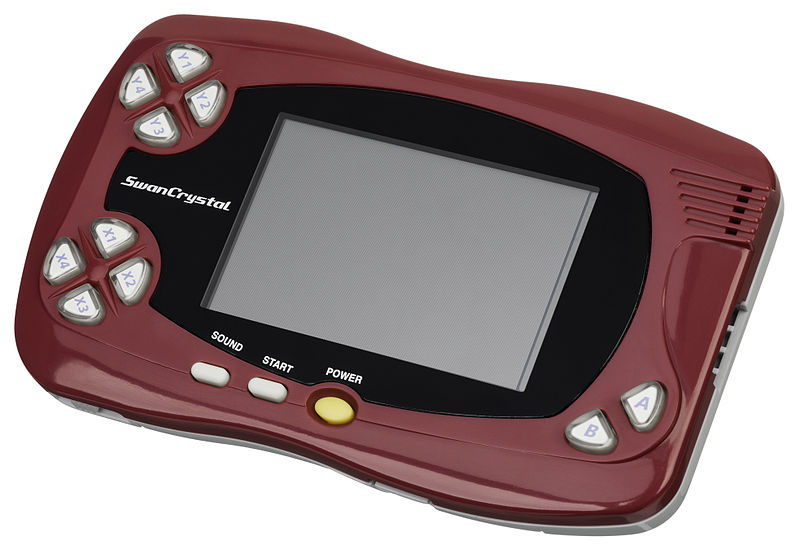
On a global level, the Game Boy Advance had no competition, or rather, the real competition for the Game Boy Advance was the other handheld consoles from Nintendo itself. Now, the fact that the GBA was victorious does not mean that it did not have worthy rivals to face it until the arrival of the new generation, mainly in Japanese lands:
- New Neo Geo Pocket Color, 1999: This was the best version of the SNK handheld that the GBA came across at its launch. Actually the Game Boy Color had already taken care of “putting it in its place”, so the GBA only finished it off… A great console that was not valued at the time.
- WonderSwan, 1999 and WonderSwan Color, 2000: The portable console that finally managed to put the original Game Boy and the Game Boy Color on the ropes, a complete 16-bit machine created by Bandai, developed by Gunpei Yokoi himself and with a catalog full of exclusive manga and anime licenses at a ridiculous price. Great rival for the Game Boy Color, the GBA settled the battle between Bandai and Nintendo with a stroke of the pen.
- GP32, 2001: The GP32 was one of the pioneers of a new concept of consoles, systems designed for emulation. An authentic Korean brown beast that even reaching 133MHz (CPU), could do little before the commercial systems of the time. Its sales were merely residual (although very decent), it paved the way for “Chinese” laptops with South Korean quality.
- SwanCrystal, 2002: The best Wonderswan with the best screen wasn’t enough to beat Nintendo’s Game Boy Advance. Still, the Wonderswan family of consoles put up a fight to the bitter end, too bad they never made it out of Japan.
- Nintendo DS, 2004: Here is the console that really liquidated the GBA, Nintendo’s own Nintendo DS took over to face the almighty SONY… And conquered the world.
- SONY PSP, 2004: The PSP was really in another league compared to the GBA… By generation, by features and mainly, by price, the PSP was never the rival of the GBA, but of the Nintendo DS.
The “short” life of the GBA
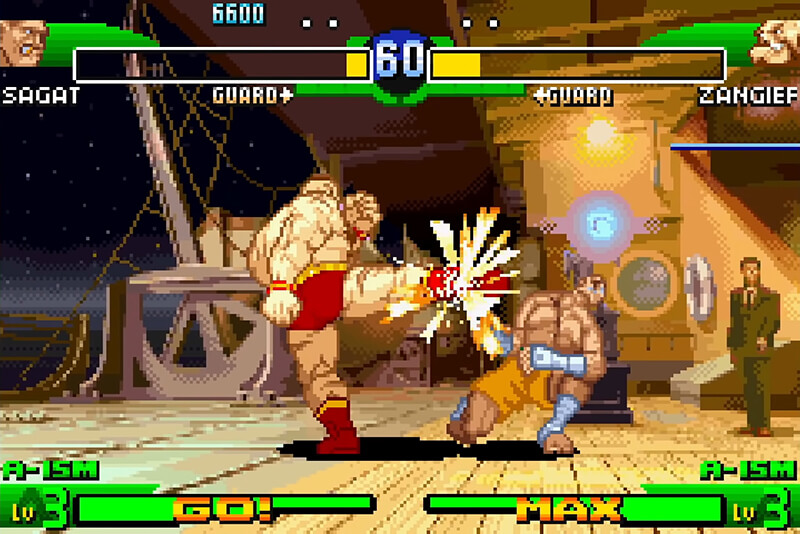
Despite being a great console, the Game Boy Advance had the misfortune of being launched between two true banners of the video game industry, two giants such as the classic Game Boy and the Nintendo DS. This fact means that, despite having really positive numbers as a trading system, comparisons are hateful.
The perception is long ago, it is true, but the truth is that the Game Boy Advance did not enjoy the same life as its sisters. While the original Game Boy, a system from 1989, enjoyed its last commercial game on June 28, 2002 (From TV Animation One Piece: Maboroshi no Grand Line Boukenki!), that is, a whopping 13 years after its release, the last commercial game for the Game Boy Advance (a 2001 system), it was released on February 12, 2008 (Samurai Deeper Kyo), just 7 years after its release. For its part, the Nintendo DS, a console launched in 2004, had its last commercial launch on October 28, 2014 (Big Hero 6: Battle in the Bay), 10 years after its launch.
In this way, we see how the commercial life of Nintendo portables, excluding the Game Boy Color, is as follows:
- Game Boy: 13 years of life.
- Game Boy Advance: 7 years of life.
- Nintendo DS: 10 years of life.
Unfortunately, the 7 years of commercial life that the Game Boy Advance had were not all of them full either, let’s see an example of the releases per year of the portable console in Japan, excluding compilations, cheap versions and re-releases of classics:
- 2001: 133 pitches.
- 2002: 209 pitches.
- 2003: 155 pitches.
- 2004: 185 pitches.
- 2005: 79 releases.
- 2006: 31 releases.
As can be seen, once the arrival of the Nintendo DS and PSP (2005) was consolidated, the developers stopped betting on the 32-bit Nintendo, leaving the console barely released just 5 years after it was launched. The Nintendo DS was a real bombshell that devastated everything, an innovative console that sold a whopping 154 million units in all its versions… And aimed at exactly the same target audience as GBA owners. Unbeatable.
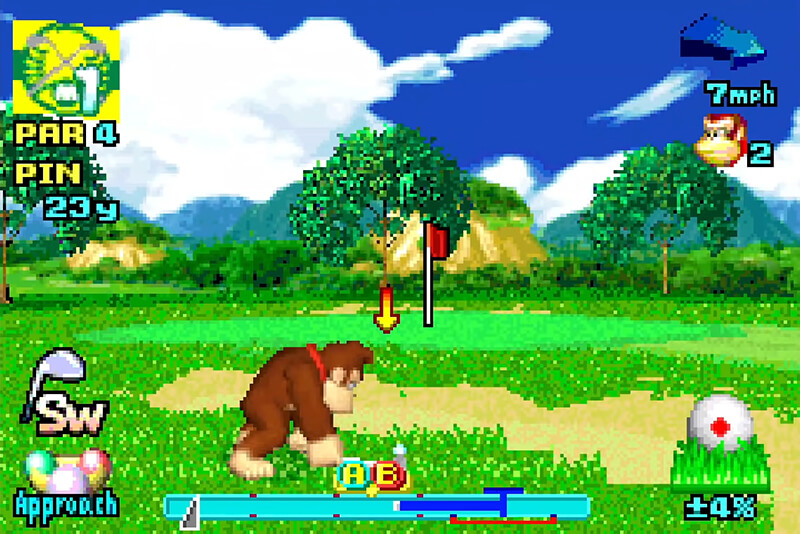
Consequently and unfortunately, unlike what happened with the original retro Game Boy, with which the developers had more than a decade to achieve mastery in the development of video games, squeezing it to the fullest until it reached unsuspected and impossible heights To imagine at the end of the 80’s, the Game Boy Advance did not have that opportunity, seeing its commercial life finished at 7 years of life. A real pity.
So this was the sad reality, Nintendo’s agile and studied response to the Sony PSP, anticipating the launch of the Sony console with the aim of not losing the battle of the new generation of portables, had as collateral damage the death of the Game Boy Advance… We’ll never know how many more years the GBA could have lasted and how far its video games would have gone if SONY hadn’t come on the scene, but that’s the way it was. A great console with a short life.
Game Boy Advance models
In the general trend of Nintendo regarding all its commercially successful consoles, the Game Boy Advance also had different models throughout its life to adapt to new times and user demands, new models that, taking advantage of new technologies, were lowering its production cost and offering better experiences.
Despite being perfectly compatible between the different versions, they have notable visual differences, improvements and modifications that go far beyond aesthetics. Let’s see them:
Original GameBoy Advance
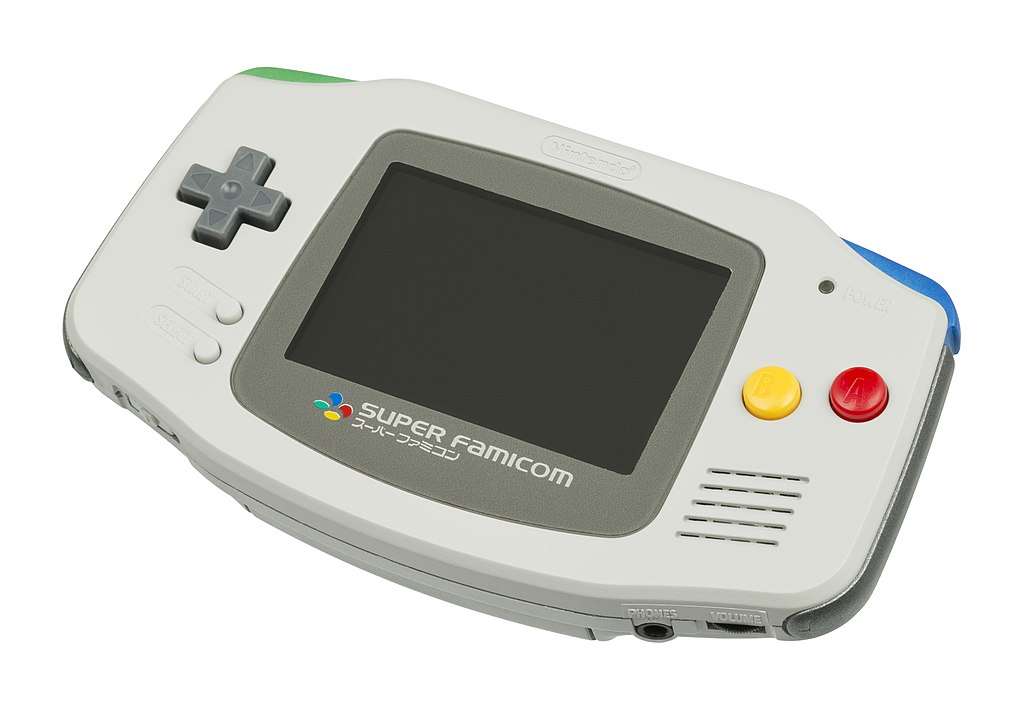
The first, the original, launched in 2001, with the screen and horizontal format and completely ergonomic… A console wonder whose only sin was that of having a NO backlit screen, a considerable flaw that responds to the search for balance in the machine between performance and battery consumption.
Game Boy Advance SP
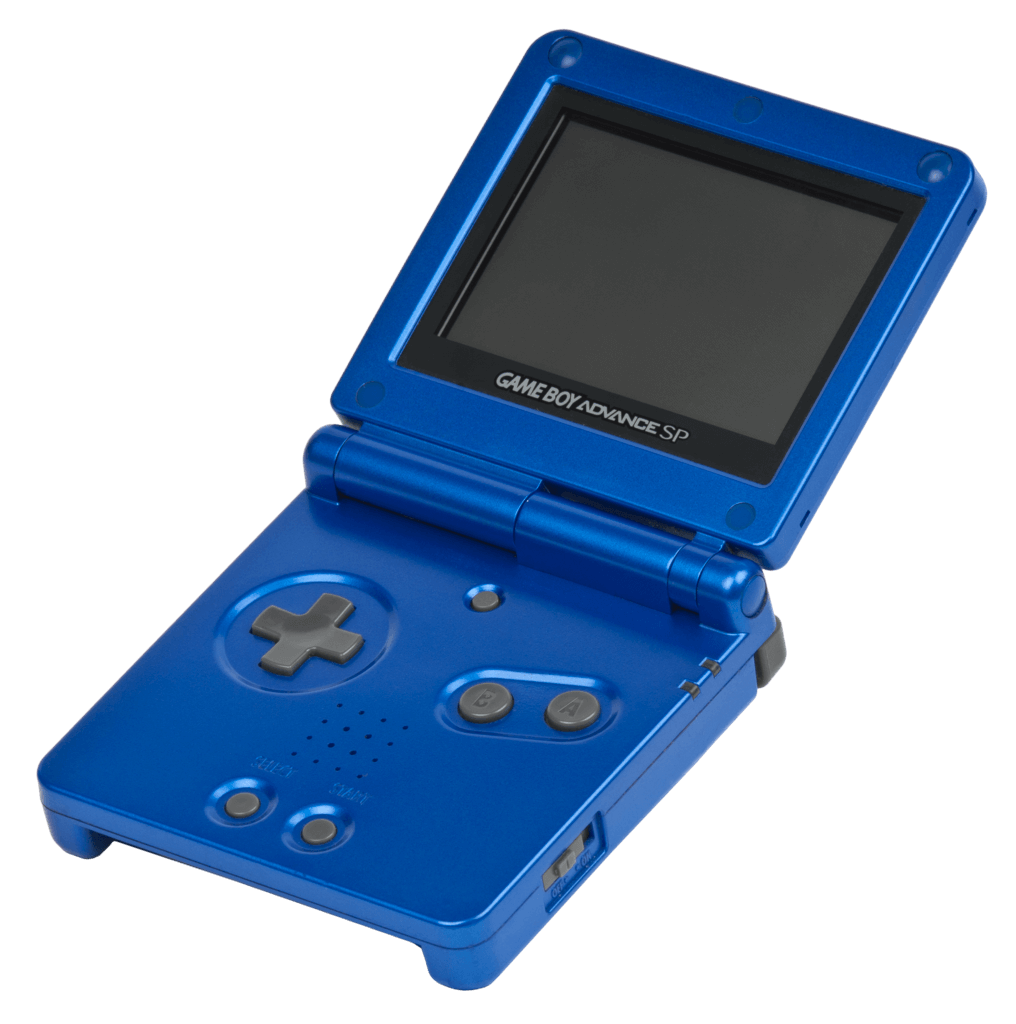
Released on February 14, 2003 for 12,500 yen (with the classic GBA already at 8,800 yen), the Game Boy Advance SP was a complete aesthetic overhaul that went back to the beginnings of Nintendo and its Game & Watch, with an elegant folding design that protected the LCD screen and reduced its dimensions. Since its launch, it has positioned itself as the superior version of the GBA, very far from the versions of Jr. systems that many companies usually release after a few years (eg PSOne).
Although the new console was exactly the same in terms of features as its predecessor at a technical level, in addition to being perfectly compatible, it did introduce two very notable improvements:
- Front light on the LCD screen, making it possible (finally) to be able to play with our console in dark environments, the wet dream of all of us who hid under the duvet with our camping flashlight. Unfortunately, despite improving the vision of the screen, its use is still poor from the perspective of the present, constantly appreciating shadows and reflections.
- Built-in rechargeable battery… Goodbye batteries! For the first time, Nintendo introduced a rechargeable lithium battery as standard, which once charged had a life of 10 to 18 hours, depending on the use of the front light and sound. This breakthrough was made possible by the proliferation of the mobile phone industry and its color screens, which led to a remarkable advance in battery performance. Quite an advance for the portable video game industry.
The GBA SP was a great machine that sold more than 43 million portable consoles, a success that Nintendo took note of in terms of design for what would be its next portable console, the Nintendo DS.
Game Boy Micro
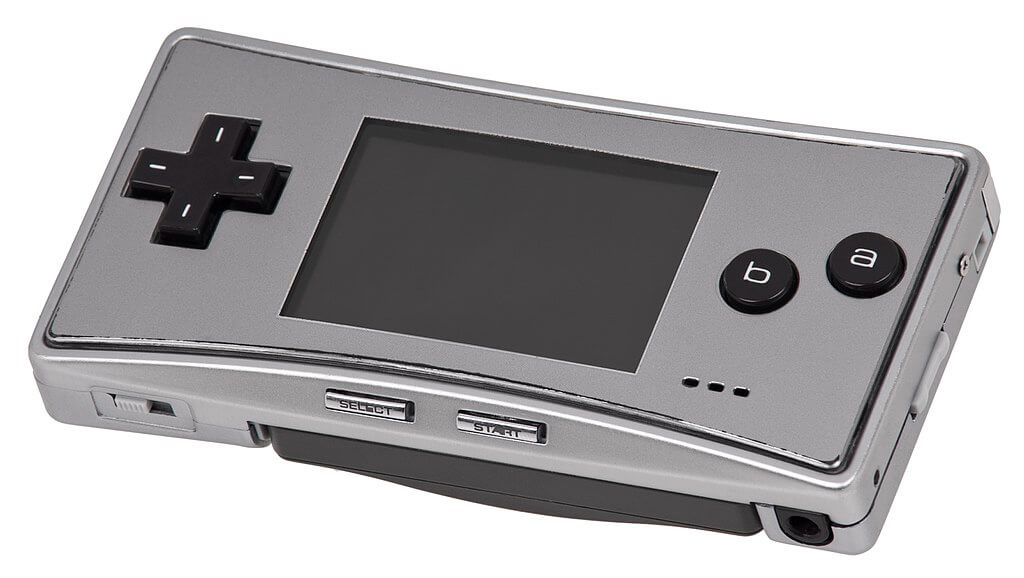
Announced on May 18 at E3 2005, Nintendo’s micro handheld console was released on September 13, 2005, for the price of 12,000 yen, to coincide with the 20th anniversary of the Famicom’s flagship video game, Super Mario Bros. With a new design tremendously elegant micro, the Game Boy Advance is a technical marvel, a gift from the gods of Nintendo, a whim for our pockets (pun intended), a joy for our eyes and the pride of Nintendo engineers… It may seem exaggerated, but that’s how it is.
Years after launching the first GBA, in which the Nintendo development team had to use common components capable of mass production, thus making it impossible to miniaturize their console, with the Game Boy micro they made up for it and created a portable console 80 grams in weight, micro dimensions of 101 mm, depth 50 mm, thickness 17.2 mm, lithium battery from 6 to 10 hours of life, aluminum body, interchangeable front and a 2-inch TFT color LCD screen with BACKLIT that looked luxurious.
We could say that the Game Boy Micro is the best portable ever made, and I mean that very seriously, it’s something I often think about, we could also say that the GBM is the best Game Boy Advance, thanks finally to its backlit screen , dimensions and minimalist design… But it is not like that, for very little.
The Game Boy Advance is an amazing machine, a device that we imagine will always be in our pockets, ready to give “continue” in our game to the Castelvania or RPG on duty… But despite all its virtues, its screen is too small to have a good gaming experience… Even looking great, playing a Final Fantasy, reading texts or moving between menus, requires a visual effort that we cannot maintain for a long time. To get an idea, the screen of an iPhone 13 is 6.06 inches compared to 2 of the GBM. On the other hand, without this aspect having any great relevance since it was a console launched in 2005, the backward compatibility with the Game Boy and Game Boy Color was eliminated.
Here’s the irony, its best asset, a backlit screen that looks wonderfully good without reflections and with high contrast, is due to its small size, its biggest stumbling block. But… can’t you play any game decently? Absolutely! Of course, you can enjoy a large number of titles that do not require visual acuity, but in most cases the game sessions will tend to be more or less short depending on the video game chosen. A real pity.
It is estimated that the Game Boy Micro sold some 2.4 million consoles, a ridiculous figure for a Nintendo system, but it is perfectly understandable since it was launched after the Nintendo DS, a console on which all promotional resources were poured. of the company. Due to its high quality and few units sold, today it is one of the most sought after and coveted retro systems.
Game Boy Advance SP AGS-101
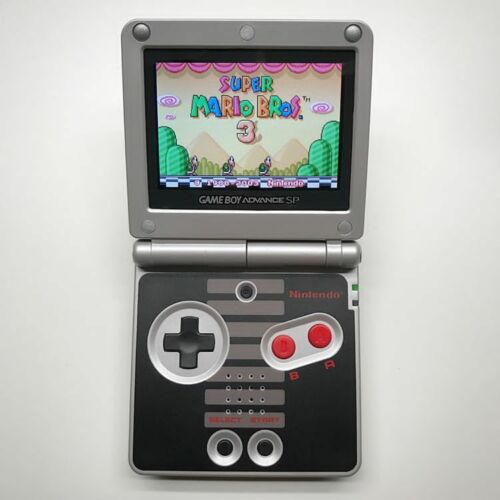
Around the same time that the Game Boy Advance Micro was released (September 2005), Nintendo created the best Game Boy Advance for the US market, a GBA SP with a BACKLIT screen… Like the one you see above and for $79.95. ..Look at that screen!! What color is!!
The release of the Game Boy Advance SP AGS-101 took everyone by surprise, as the Game Boy Micro was released all over the globe in the same period, including the United States. Evidently, it had absolutely no business logic:
- The Nintendo DS had arrived in the United States in February 2004, it was the console that had to be promoted by Nintendo America.
- Due to the advent of the NDS, the goal was to liquidate the remaining GBA SP lots through bidding.
- Incredibly, given this scenario Nintendo had decided to launch and export to the whole world another new Game Boy Advance, the GBA Micro.
Long story short, with 2 new handhelds on the market, Nintendo goes and decides to release a third revised machine…
But Nintendo did it, without any sense, without any transcendental reason, with new consoles and withdrawing the SP from the market, Nintendo created what today is considered the best Game Boy Advance to play, an official machine, with a screen of similar quality as the GBA Micro, but much larger. A LUXURY that today is sought after and coveted by thousands of collectors of retro consoles. A true wonder of the past, which Nintendo created for the gamers of the future. Thanks nintendo.
To differentiate it from normal SP models, its box read: “Now with a BRIGHTER backlit screen”. If you are interested in purchasing an AGS-101 like the one in the photo, here is the link to the ebay seller: Buy Game Boy Advance SP AGS-101.
Game Boy Player, the star peripheral of the Game Cube and Game Boy Advance
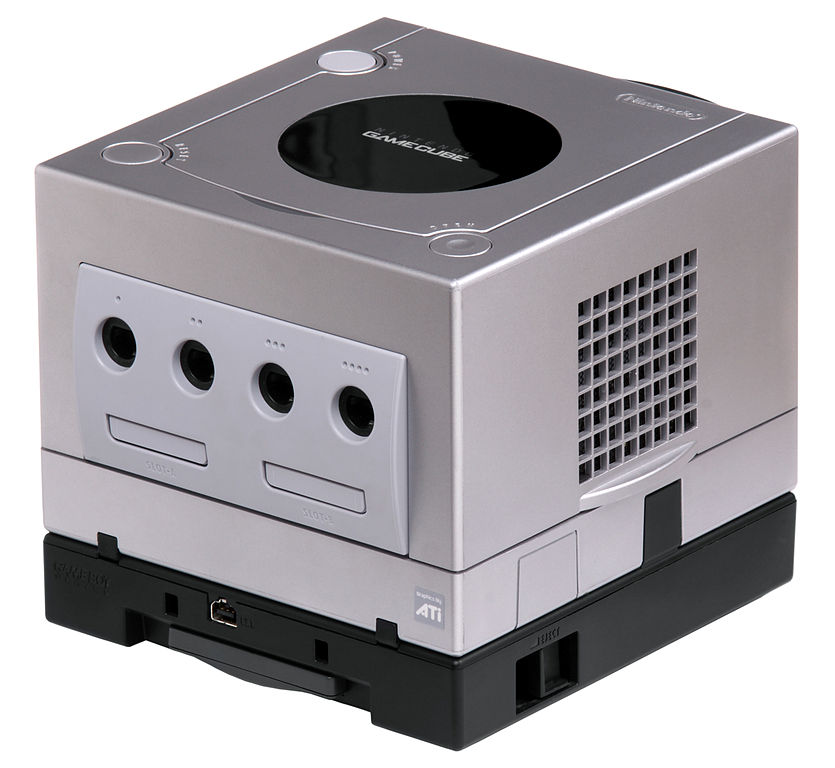
One of the best peripherals in the history of video games, it is itself a Game Boy Advance without a screen or power supply (batteries/battery), a rarity that has gone almost completely unnoticed by most of the gamer community, due in part to the limited success of the Game Cube against the PS2.
Many of you weren’t born, and the rest of us were on our PS2s playing PES or Warcraft on our PCs, but this peripheral, which has the architecture of a GBA inside (it’s not emulation), has as its main function that of power play the cartridges of our original Game Boy, Game Boy Color and Game Boy Advance on our televisions, the same great concept of the Super Game Boy but much more elaborate and with more possibilities.
A console made peripheral that made us enjoy our portable games on the screen of the living room, a hoot we go.
Modding and resurrection of the Game Boy Advance, the second life of the GBA

For all of us who have lived through the video game era of the 80’s and 90’s, the Game Boy Advance is a throwback to the past at its best, 16-bit video games “at 32-bit quality” in our palm of the hand. hand, upgraded nostalgia they would say. But as we have already seen, what could be considered the quintessential retro system has the contemporary flaw of having a screen that is not up to our current expectations… And that is where modding comes to our machines to give them a second life as you can see in the image above.
In recent years, an amazing modding industry has been created for our retro consoles, with the Game Boy consoles being especially powerful. Updating a retro system to current quality standards is today possible for everyone with a really tight investment: personalized and exclusive covers, buttons, lithium batteries, sound mods, backlit IPS screen kits… We have everything you need to bring your old Game Boy Advance back to life and enjoy them again, with image quality thanks to the IPS screens never seen before.
From my own experience in 2 units, if we are interested in playing GBA games, it is really worth the investment, either buying the parts or directly the modified system. In addition to a good cleaning, the indispensable thing will be to change the screen of our Game Boy Advance, only with this our machines will be reborn and we will enjoy old titles from another perspective. The difference between playing with an original GBA and a modified GBA with an IPS screen is huge.
So is the modified Game Boy Advance the best retro handheld console? Yes, now it is. Nothing like playing on the original system to the original cartridges but with the gaming experience offered by current components. With a hardware upgrade for our times (display + battery + sound), we will get the ultimate retro handheld console, which will also give a new life to all compatible Game Boy and Game Boy Color titles… What more could you want?
Renewing our old GBA or acquiring a second-hand one for this purpose is, without a doubt, one of the best decisions that retro lovers can make. Here you have a video tutorial of the assembly of a backlit GBA IPS V2 screen:
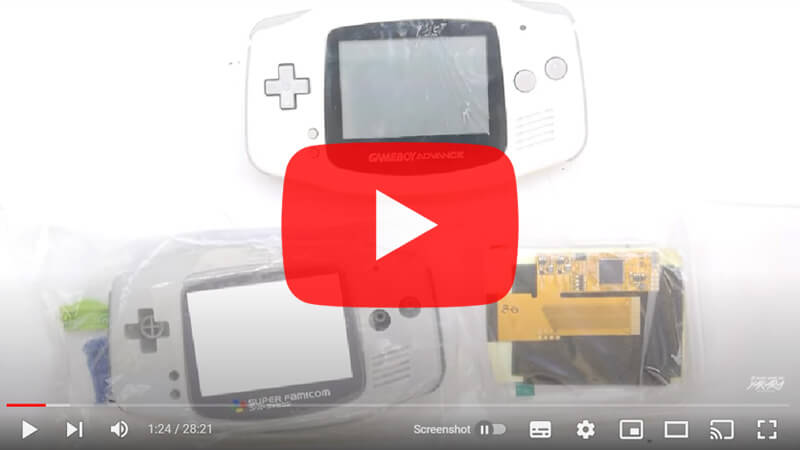
For all of you who are thinking of taking the plunge and setting up your definitive GBA, here is an eBay seller specializing in the sale of IPS LCD backlit screen kits for the Game Boy Advance, with more than 50,000 positive votes and screens from 40 euros: Buy Game Boy Advance IPS backlit screen kit.
The price of the original Game Boy Advance
How much did a Game Boy Advance cost? Nintendo launched its 32-bit handheld console for a suggested price of 9,800 yen in Japan and $99.99 in the United States, but as you know, at Infoconsolas we like to contextualize the prices of consoles in relation to their competition, this being the best way to compare if a console released 20, 30 or 40 years ago could be considered cheap or expensive, even in relation to past or future releases.
Here are the launch prices for the Game Boy Advance in Japan along with all other handhelds released, from the original 1989 Game Boy to the 2005 Game Boy Micro.
| CONSOLE | LAUNCH | LAUNCH PRICE | BRAND |
| Game Boy | 1989 | 12.500 yenes | Nintendo |
| Lynx | 1989 | 29.800 yenes | Atari |
| Game Gear | 1990 | 19.800 yenes | Sega |
| Game Boy Pocket | 1996 | 6.800 yenes | Nintendo |
| Game Boy Light | 1998 | 6.800 yenes | Nintendo |
| Game Boy Color | 1998 | 8.900 yenes | Nintendo |
| Neo Geo Pocket | 1998 | 7.800 yenes | SNK |
| WonderSwan | 1999 | 4.800 yenes | Bandai |
| Neo Geo Pocket Color | 1999 | 8.900 yenes | SNK |
| New Neo Geo Pocket Color | 1999 | 6.800 yenes | SNK |
| WonderSwan Color | 2000 | 6.800 yenes | Bandai |
| Game Boy Advance | 2001 | 9.800 yenes | Nintendo |
| SwanCrystal | 2002 | 7.800 yenes | Bandai |
| Game Boy Advance SP | 2003 | 9.800 yenes | Nintendo |
| Nintendo DS | 2004 | 15.000 yenes | Nintendo |
| Sony PSP | 2004 | 19.800 yenes | Sony |
| Game Boy Micro | 2005 | 12.000 yenes | Nintendo |
As you can see, the GBA was a console with a very tight launch price. Even if we compare it with the competing consoles (Bandai and SNK), which had a lower price, the GBA comes out better in quality/price ratio since its CPU was a 32-bit much more powerful than the other portables.
Looking at the launch prices of the Nintendo DS and Sony PSP compared to the GBA and GBS SP, it is understandable that many users chose to purchase a GBA as their first portable console, due to the high prices of the consoles focused on polygonal graphics and the 3D.
Collecting the Nintendo Game Boy Advance
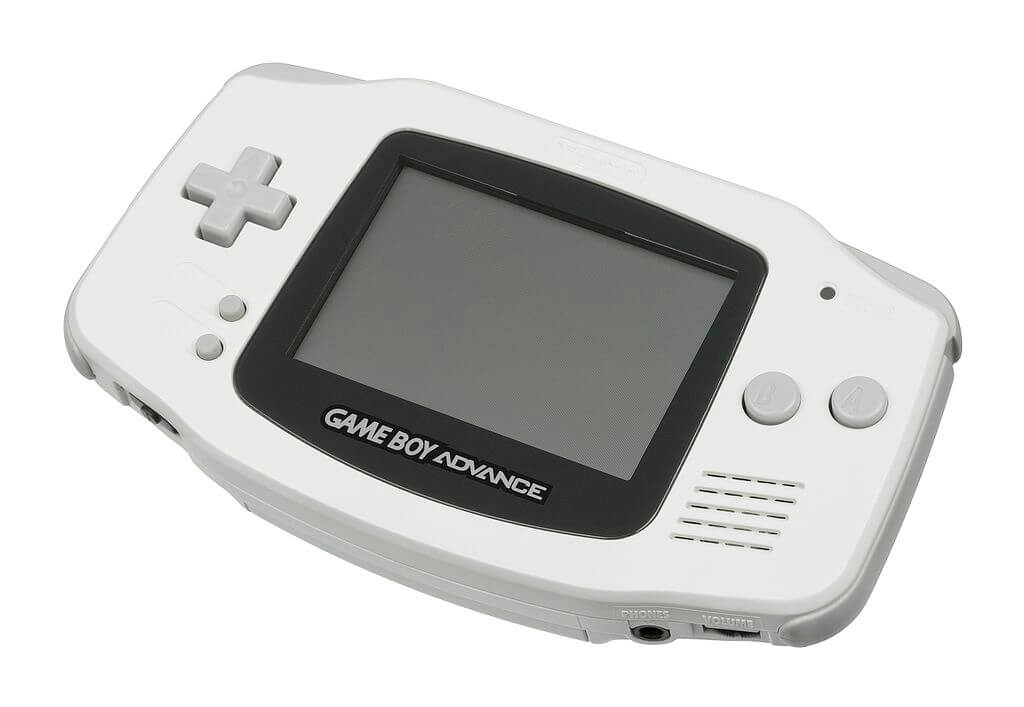
In addition to our unconditional love for this console, I hope that this article has made it very clear that at a conceptual level, the Game Boy Advance is the last of the 100% pixelated and 100% two-dimensional consoles… A machine that maintains all the 16-bit magic in the palm of our hands, the hands of collectors thirsty for nostalgia and memories of our childhood
Consequently, as console collectors that we are, the Game Boy Advance is an indispensable machine in our collection, and unlike many other systems whose main interest is to preserve a piece of video game history, the Game Boy Advance (modified ) is our perfect bedside console, the one we always have on the bedside table, the one we go to bed with and the one we wake up with… That’s how important this marvel is.
And not that I say so, the Game Boy Advance is one of the systems that has become more expensive over the years, going from forgotten console to coveted console. The possibility of updating it for little money and turning it into a perfect retro console has generated a nostalgic craze for this system, which ranges from those born in the early 80’s to those born almost in the 21st century. There were many of us who enjoyed the system at the time and many more who are looking to continue enjoying pixelated retro games on their original system.
As always, for those of you who have decided to start collecting the Game Boy Advance console, we recommend you to be patient and start your search very well informed about what model you are looking for, what use you will give it and what prices are currently standard.
Buying a second-hand Game Boy Advance console
As we have already mentioned, the price of the Game Boy Advance in its different models has risen a lot in recent years, far away are the bargains and the consoles that no one wanted anymore, nowadays everyone who has a Game Boy Advance knows exactly what what he has in his hands.
Even so, this is a very common console that we can still easily find in second-hand stores in our cities and applications like Wallapop, but yes, at market prices. Is it worth buying a Game Boy Advance today? Of course, we have already said it, the important thing is to be very clear about what we are going to use it for:
If we want to play with the original system without modifying it, a GBA SP will be the most suitable at a reasonable price, since the AGS-101 skyrockets in price. But if our intention is to modify it, looking for the original model regardless of how the screen, casing and buttons are, will be a great way to find a machine at a very reasonable price. When complete kits are sold, we will change the screen, the casing and the buttons, so its condition does not matter, only that it works.
For our part, as console collectors, as always, we recommend the eBay sales platform for this type of console. In the above link you will find the entire list of Game Boy Advance consoles currently available on Ebay, both original consoles and already modified units, this being a great solution if you are not a handyman. We hope you find “your” Game Boy Advance and enjoy it again like in the old days.
STOP COLLECTOR! If you’ve seen the console listing on eBay, I want to say THANK YOU. Since 2004, the objective of Infoconsolas is to contribute to preserving the history of consoles and video games through our own collection of systems and the hours of work invested in this very website.
Being an eBay partner listing, if you buy a game or console, you will be helping Infoconsolas in the preservation of video game culture, so thank you very much again!
TOP: Best Game Boy Advance Portable Games
Once again, from Infoconsolas we offer our most humble tribute to Mr. JARM, sharing with you one of his GBA videos: The 20 best GAME BOY ADVANCE games of all time (THE DEFINITIVE TOP).
We couldn’t have done it better, 13 minutes in which Jarm reviews the best Game Boy Advance video games in any of its models, arguing one by one the reason for such an arduous task, selecting the 20 best games on a platform like the GBA .

FAQ Game Boy Advance
Below we show the main questions and answers that the girl makes regarding the Game Boy Advance:
Yes.
Yes.
The original Game Boy Advance, the Game Boy Advance SP, and the Game Boy Advance Micro.
There are a total of 1,538 video games for the system.
Cartridges.
Its CPU is 32-bit, despite the fact that many of its games have 16-bit aesthetics.
9,800 yen upon release in Japan.
No, it is not.
Yes, but the hardware of the console is focused on 2D.
On March 21, 2001 in Japan, June 11, 2001 in North America, and June 22, 2001 in Europe.
Samurai Deeper Kyo, released on February 12, 2008.
In June 2012, after 11 years of life.
As a brand and concept, the Nintendo DS was Nintendo’s next handheld console.
In terms of screen and battery quality, the GBA Micro. Precious.
Technical characteristics of the Game Boy Advance portable video game console
Below we have the specifications of the Game Boy Advance based on wikipedia:
- Measurements: 145mm wide x 82mm high x 24mm thick.
- Weight: 140 grams.
- Format: Cartridges.
- Display: 2.9-inch reflective TFT liquid crystal display (LCD).
- Screen size: 40.8mm x 61.2mm.
- Frames per second: 59.72 Hz.
- Resolution:
– GBA: 240 x 160 pixels (3:2 aspect ratio).
– GB: 160 x 144 pixel, when there is a blank space, the screen can be enlarged with LR. - Colour: 15-bit RGB. 512 simultaneous colors in “character mode” and 32,768 simultaneous in “bitmap mode”.
- CPU:
– 16.8 MHz 32-bit ARM7TDMI with onboard memory for GBA games.
– Sharp LR35902 (8080 variation) at 8388 or 4194 MHz for GB and GBC backwards compatibility. - Memory:
RAM: 32k bytes (CPU internal memory).
DRAM: 256k bytes (CPU external memory).
RAM: 96k bytes (CPU internal memory). - Power supply: 2 AA batteries.
- Entry:
– Cruceta de 8 direcciones.
– Botones A, B, L, R, Start, Select.
– Control de volumen.
– Botón On/Off.
– Cable link.
External sources and links
- Console graphic resources:
https://commons.wikimedia.org/wiki/User:Evan-Amos
https://ebay.us/2INOrC


